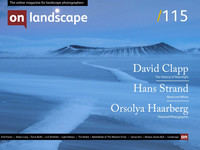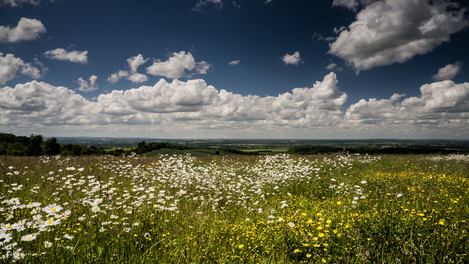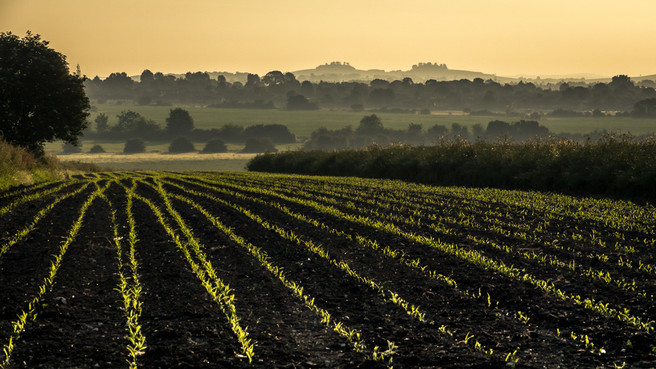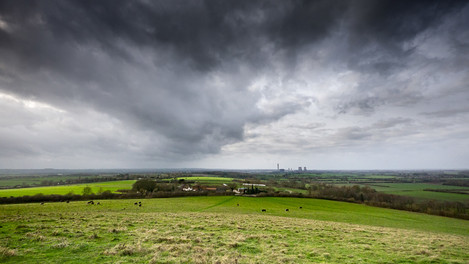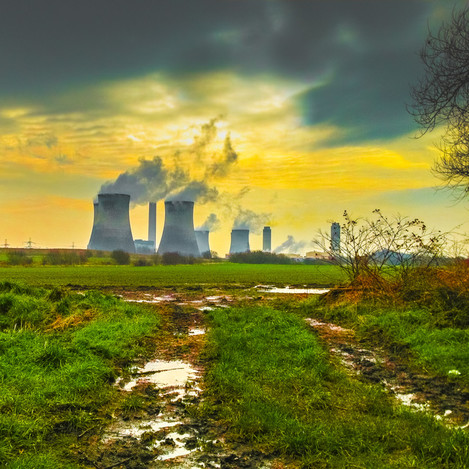An exhibition by Martyn James Bull
Martyn James Bull
Martyn James Bull is a writer, filmmaker and photographer based in Didcot, Oxfordshire with a deep love of science, technology, architecture and landscape.
Over the past few years, many of my journeys in the Thames Valley around Didcot, south of Oxford, have been inspired by a chance finding of an unusual 1960s map of the area created by landscape architect Frederick Gibberd.
Gibberd developed the map as a tool to determine the layout of Didcot Power Station in order to minimise the visual impact in the valley of such an enormous construction.
Following in the footsteps of Gibberd has been a rewarding way of rediscovering a landscape I thought I knew well. The elegant layout of Didcot Power Station provides a natural focal point to the landscape, the weather and the seasons. The towers and chimneys somehow help to give the valley more definition and character, and an immediate awareness of location and orientation.
Didcot lies in the Thames valley river plain south of Oxford, and is in an area with a long history and an understated beauty. To the south lie the Berkshire Downs and to the East the Chiltern Hills. Both are designated Areas of Outstanding Natural Beauty, and the Ridgeway National Trail, one of the oldest known roads in Europe, runs along the tops of the hills. There are also two little hills in the middle of the valley known as Wittenham Clumps.
Gibberd’s map identifies 20 viewpoints scattered across the valley from White Horse Hill in the West to Lardon chase in the East, and also explains how the power station came to have its unusual layout of two groups of three cooling towers either side of the main generating buildings.
Writing alongside the map Gibberd explains: “ Eight towers in one group look extremely massive, particularly when viewed from the east or west. We decided, therefore, that the towers must be divided into two groups in order that the overall mass should be broken down and that the groups should be equal in size. Views from the Chiltern Hills and Wittenham Clumps suggest that the groups should be sited on a north south axis in order to provide a gap between groups when seen from the east. There are also important views from the Berkshire Downs as far east as Gore Hill. We decided that if the tower groups are positioned on an approximate north west to south east axis, then the gap between the towers can be maintained for both view points.”
Alongside the map, there are photographs from some of the viewpoints onto which he has carefully drawn on how the power station would look from each location. I knew immediately that I had to track down the viewpoints, and I’ve used this project as a way to document the landscape of the valley.
Finding all of the viewpoints has been quite tricky. The road systems have changed, massive trees have appeared and disappeared, field boundaries altered, prominent buildings demolished, and some of the markings and descriptions on the map are just wrong. The distances between them mean that only small groups can be visited at a time, but that has ensured its own discipline and a good pacing to the project.
My approach to making the pictures has been influenced by two things: massive skies, and the odd aspect ratio of Gibberd’s photos which are in quite an unusual wide format.
I have found myself reacting to the environment and weather in ways that go beyond recreating the exact photograph that Gibberd took, and searching out viewpoints that I consider important or beautiful that he never considered.
I have found a deep love of photographing in 16:9 and also 1:1, composing for each separately, and using a mix of very wide angle, deep telephoto and occasionally fisheye lenses. And I have also found some wonderful vistas by following a rule to always turn around and photograph what is behind me.
By returning repeatedly to the same spots, and discovering new ones, I have developed a respectful sense of the long passage of time and the slowly changing seasons. Whilst the surface decorations of the valley constantly change year after year, the contours and masses of the valley seem to always reliably be the same.
LANDSCAPE, an exhibition by Martyn James Bull is at the Vale & Downland Museum, Wantage. All works have been printed with Epson UltraChrome HDX Wide Gamut Inks on 308gsm Hahnemühle Photo Rag by theprintspace, London.

